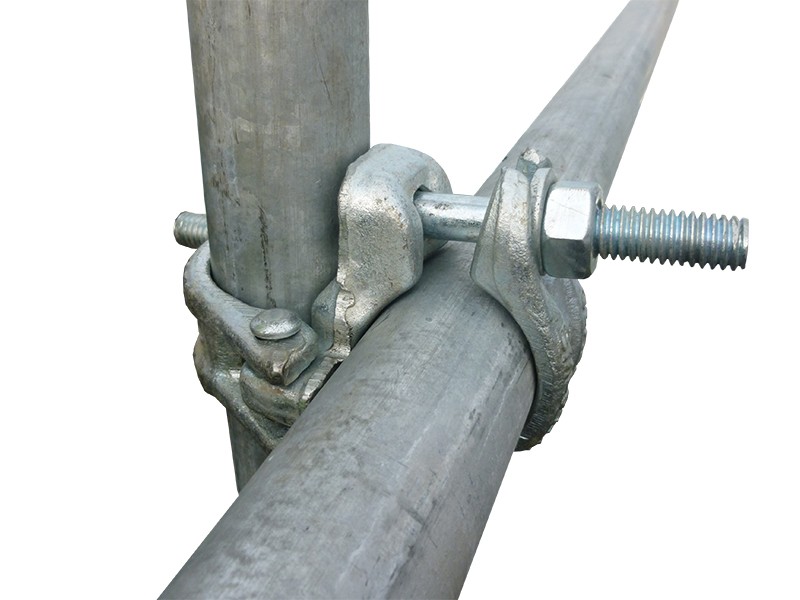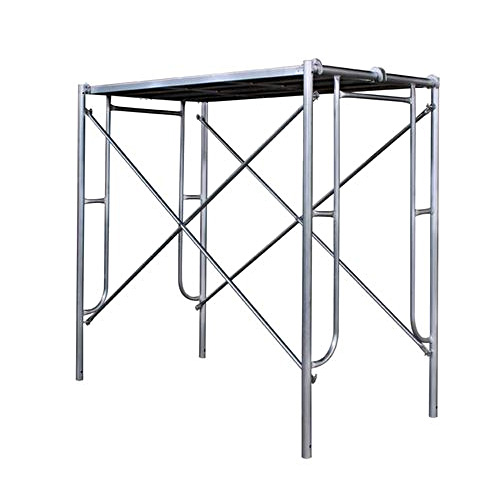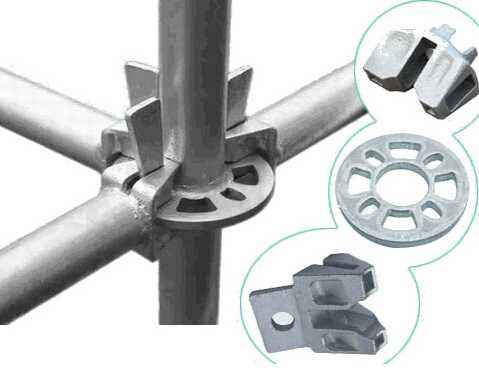What is scaffolding?
Scaffolding is a working platform that can make sure the safety in all construction processes. It is divided into outer scaffolding and interior scaffolding according to the location of the installation. According to the materials, it can be divided into wooden scaffolding, bamboo scaffolding and steel scaffolding. Also, it is divided into vertical scaffolding, bridge scaffolding, portal scaffolding, suspended scaffolding, hanging scaffold and crawling scaffolding.
Different types of scaffolding are used in different types of construction. Most of the bridge support racks use bowl-buckle scaffolding, but also use portal scaffolding.
Compared with general structure, the scaffold has following features:
1. Loading capacity is large.
2. The fastener connection node is semi-rigid, and the rigidity of the node is related to the fastener quality and installation. There is a big variation in node performance.
3. There are initial defects in the scaffolding structure and components, such as the bending and corrosion, the erection of dimensional errors, and the loading eccentricity.
4. It has great variation in the constraints of the scaffolding when connecting with the wall.
How many types of scaffolding?
Angle coupling scaffolding
1. Advantages
1) Larger bearing capacity. When the geometric dimensions and construction of the scaffold meet the relevant requirements, the bearing capacity of the scaffold single-pipe column can reaches 15kN to 35kN.
2) Easy to install and remove. Due to the length of the steel pipe is easy to adjust and the fasteners are easily connected, they can be used in various buildings and constructions.
3) More economical, simple processing and lower investment.
2. Disadvantages
1) Fasteners are easy lost.
2) The rods at the nodes are eccentrically connected, and the load and internal forces are transmitted by the anti-sliding force, thereby reducing its carrying capacity.
3) The connection of the fastener node is significantly affected by the quality of the fastener itself and the worker's operation.

Cuplock scaffolding
1. Advantages
1) Multi-function: According to the specific construction requirements, the single and double-row scaffolds, support frames, support columns, material lifting frames, climbing scaffolds, cantilever frames can be combined to form different types of frame sizes, shapes and load capacities. It can also be used for structures such as utility sheds and lighthouses. Particularly suitable for erecting curved scaffolds and heavy-duty support frames.
2) High efficiency: The longest rod is 3130mm and weighs 17.07kg. The whole assembly and dismantling speed is 3 to 5 times faster than conventional, fast and effortless.
3) Universality: The main components adopt common fastener-type scaffolds, which can be connected with common steel pipes and have strong universality.
4) Bearing capacity: The pole connection is a coaxial heart socket, and the crossbar is connected with the pole by a cupboard joint, and the joint has reliable bending, shearing and torsional mechanical properties. In addition, the axis of each rod intersects at one point and the node is in the plane of the frame. Therefore, the structure is stable and reliable, and the bearing capacity is large.
5) Safety: When designing joints, taking into account the screw friction and self-gravity of the upper bowl buckle, the joints have a reliable self-locking ability.
6) Easy to process.
7) Less maintenance.
2. Disadvantages
1) Crossbars are several sizes of shaped rods. The bowl button nodes on the poles are set at 0.6m spacing, limiting the frame size.
2) U-shaped connection is easy lost.
3) Expensive.
Frame scaffolding
1. Advantages
1) Standard sizes
2) Reasonable structure, good stress performance, high bearing capacity.
3) Easy installation and disassembly in construction, high erection efficiency, time-saving, safe and economical application.
2. Disadvantages
1) Customized sizes according to different structures.
2) Cross support is easily broken at the hinge point.
3) Heavy
4) Expensive

Ringlock scaffolding
1) Easy and fast to set up.
2) Flexible and safe.
3) Convenient storage and transportation.

Aluminum scaffolding
1) Lighter than traditional scaffolding.
2) High component connection strength.
3) Easy installation, no need any tools.
Above are some types of scaffold and their features, we can choose right one as the specific requirement when needed.
Prev Post: How to Choose A Good Air Cooled Chiller?
Next Post: What Are The Ingredients of Japanese Style Bread Crumbs?
![]()
